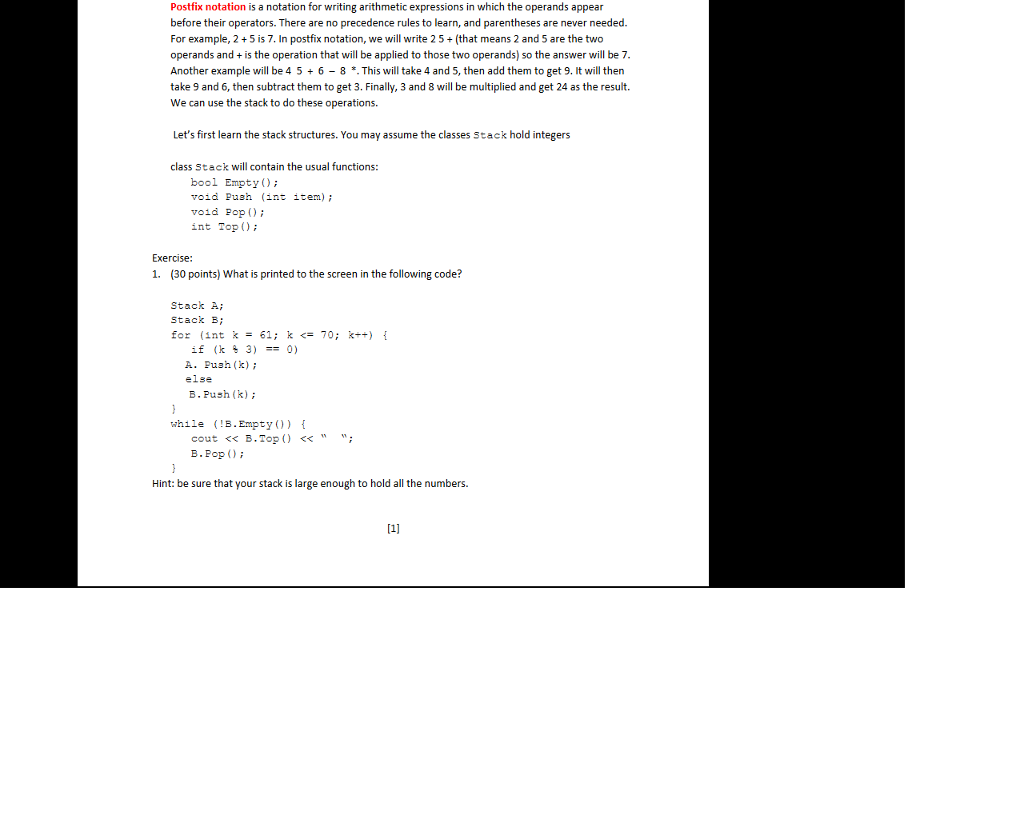Answered step by step
Verified Expert Solution
Question
1 Approved Answer
C++ #include using namespace std; const int MAXSIZE = 20; class Stack { public: Stack(); bool Empty(); void Push(int item); void Pop(); int Top(); void
C++
#include
const int MAXSIZE = 20; class Stack { public: Stack(); bool Empty(); void Push(int item); void Pop(); int Top(); void displayStack(); private: int stk[MAXSIZE]; int top; };
Stack::Stack() { top = 0; } bool Stack::Empty() { if (top == 0) return true; else return false; } void Stack::Push(int item) { stk[top] = item; top++; } void Stack::Pop() { top--; } int Stack::Top() { return stk[top]; } void Stack::displayStack() { for (int i = 0; i

Step by Step Solution
There are 3 Steps involved in it
Step: 1

Get Instant Access to Expert-Tailored Solutions
See step-by-step solutions with expert insights and AI powered tools for academic success
Step: 2

Step: 3

Ace Your Homework with AI
Get the answers you need in no time with our AI-driven, step-by-step assistance
Get Started


